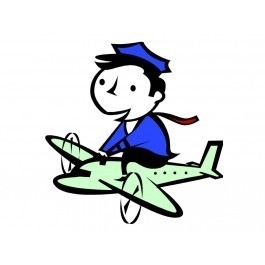|
|
Private Pilot Practical TestDescriptionPrivate Pilot Practical Test Revised 10-03-2025>>>>>>>>>>WINGS ACTIVITIES<<<<<<<<<< Your students can earn Wings credit for their first solo. Click here for more information. If not, log into FAASafety.gov and under activities, search for "Initial Certification - Private Pilot" or by Activity Number: A071102-02 For Part 141 students, you need to use these two activities (the DPE can validate both of these for you once you pass the checkride): Use this link for the flight portion Use this link for the Ground School Here are a few Wings activities that you can get credit for during your private pilot training ATC & You: The Art of Negotiating with ATC ASEL - Takeoffs, Landings, and Go Arounds Wings Activity - A070405-07 Laps In The Traffic Pattern FAA Wings Activity - EducAvia-PVT-ASEL-001 ASEL-Airport Operations (Pvt, Comm'l, ATP) - Activity Number:A100125-07 ASEL-Takeoffs, Landings, Go-arounds (ATP, Comm'l, Pvt) Advanced Level - Activity Number:A070405-89 Step-by-Step Incorporate PLT codes in to my Plan-of-Action Print Flight-Profile to take on flight The day of the test: Verify that the applicant has the proper experience. Click here for Part 61 requirements Click here for information on student pilot cross country requirements Verify approval for test in DMS Verify proper endorsements for checkride: A 1. I certify that [First name, MI, Last name] has received and logged training time within 2 calendar-months preceding the month of application in preparation for the practical test and [he or she] is prepared for the required practical test for the issuance of [applicable] certificate. A 2. I certify that [First name, MI, Last name] has demonstrated satisfactory knowledge of the subject areas in which [he or she] was deficient on the [applicable] airman knowledge test. A 33. I certify that [First name, MI, Last name] has received the required training in accordance with §§ 61.107 and 61.109. I have determined [he or she] is prepared for the [name of] practical test. Open my Questions & Answer page PUNCH HOLE IN OLD CERTIFICATE *****Notes >>>>> Per the March 2019 Initial DPE training class an applicant can do one or two go arounds when attempting a landing. It is up to the examiner as to how many go arounds are allowed. >>>>> An applicant can also stop a maneuver and restart it if the applicant feels the maneuver got of to a bad start. For example, on a steep turn if the applicant is climbing or descending too much during the entry, the applicant can stop the maneuver and restart the maneuver. *****Note >>>>> The ground reference maneuver rectangular course cannot be a traffic pattern with a landing. The ACS states "PA.V.B.S7 Maintain altitude ±100 feet; maintain airspeed ±10 knots." Flying the pattern with a landing is NOT maintaining altitude plus/minus 100 feet. *****Note >>>>> The FAA does not recommend that you do a touch and go on a Practical Test. ***** Unusual attitude recovery >>>>>In moderate unusual attitudes, the pilot can normally reorient by establishing a level flight indication on the attitude indicator. However, the pilot should not depend on this instrument if the attitude indicator is the spillable type, because its upset limits may have been exceeded or it may have become inoperative due to mechanical malfunction. If it is the nonspillable-type instrument and is operating properly, errors up to 5 degrees of pitch-and-bank may result and its indications are very difficult to interpret in extreme attitudes. As soon as the unusual attitude is detected, the recommended recovery procedures stated in the POH/AFM should be initiated. If there are no recommended procedures stated in the POH/AFM, the recovery should be initiated by reference to the ASI, altimeter, VSI, and turn coordinator. PracticalTest PlasticCertificate Detailed Information
|









